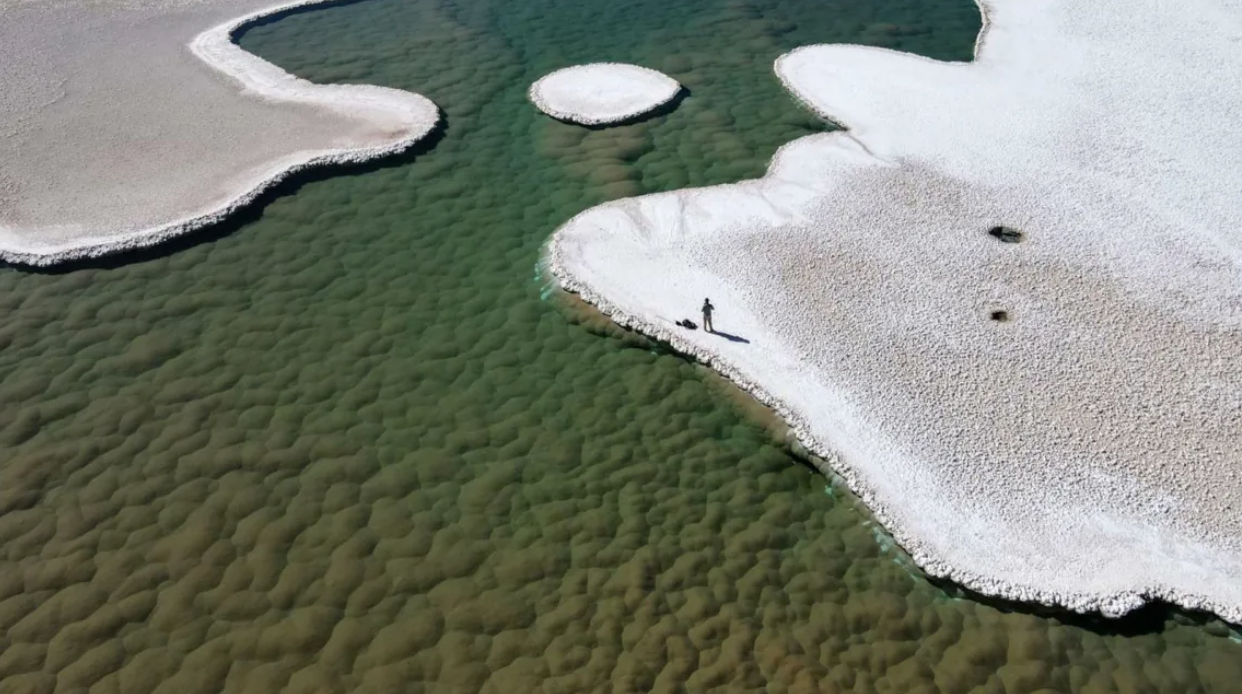In a desert in Argentina, far from settlements and at an altitude of about 3700 meters, an ecosystem that can be called “exotic” for science has been discovered.
Among the white salt flats on the Puna de Atacama plateau, an ecosystem of greenish lagoons has been found, forming layered mounds as they expand and harboring large communities of bacteria called stromatolites. This unique ecosystem gives us a glimpse back billions of years, when primitive organisms first appeared on our planet.
Geologist Brian Hynek, one of the scientists who discovered this unique ecosystem, said in a statement: “This lagoon may be the best modern example of the earliest signs of life on Earth. It’s unlike anything I’ve ever seen, and I don’t think any scientist has ever seen anything like it.”
“It’s fascinating that we can still find undocumented things like this on our planet.”
In the drone image below you can see these mysterious lagoons where life thrives:
Some of the oldest evidence of life on Earth can be found in these 3.45 billion-year-old fossilized stromatolites found at Marble Bar in Western Australia. Back then, photosynthesizing microbes called cyanobacteria formed these layered mounds. The significant amount of oxygen produced by cyanobacteria did not appear in the Earth’s atmosphere until about 1 billion years later.
[su_posts posts_per_page=”1″ post_type=”any” tax_term=”22834″ offset=”1″ order=”desc” orderby=”id” post_status=”any” ignore_sticky_posts=”yes”]
This newfound ecosystem could also shed light on what it was like on Mars, a planet that is now desertified but was once full of lakes and rivers.
“It doesn’t look like anything I’ve ever seen, and I don’t think any scientist has ever seen anything like it.”
“If life evolved to the point where it left fossils on Mars, it would probably look like this,” says Hynek: “Understanding these modern communities on Earth informs us that we should look for similar things in Martian rocks.”
For today’s scientists, it is not surprising that these interesting lagoons are unknown. Staying in this small desert town of 35 inhabitants, the researchers saw clues about the lagoon in satellite images. They were able to find these greenish waters by driving until the road ended and then walking.
Hynek describes how difficult this step was as well: “In some places we were knee-deep in this salty slurry.”
-We summarize Mark Kaufmann’s report-





